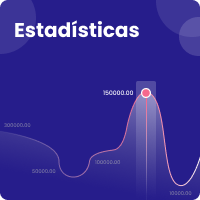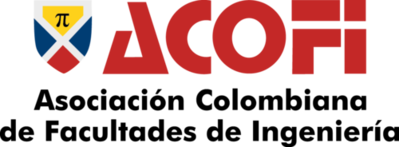INCREASING MEANINGFUL LEARNING OF ENGINEERING STUDENTS THROUGH ENABLING TECHNOLOGIES AND PRACTICES
DOI:
https://doi.org/10.26507/ponencia.933Palabras clave:
modern engineering teaching, creativity, social role of engineering, student engagementResumen
Abstract
Professionals of the 21st Century must be able to face the challenges of sustainable development through the capacity of effectively producing innovation. However, the fact that we are currently living in the information age does not imply that current graduates are smarter, have more knowledge nor that they can develop products, systems and services in a more efficient manner. This is even more critical in developing countries, where a rapid transition to greener economies following a self-established path, instead of blindly imitate industrialized nations, is a must. On the other hand, current technologies allow for a more profound impact in the learning process. With clear goals and proper implementations, Information and Communication Technologies (ICTs) can lead to more capable engineers. This work is a compilation of different technology-mediated learning experiences within the Mechatronics Engineering Program at the Universidad Piloto de Colombia. All of them consisted in a learner-centered approach, where the objective was to attain a considerable improvement in both hard and soft skills. A discussion of better ways to support learning with the presented tools is also carried out throughout this paper.
Introduction
If current and future engineering graduates are to meet the challenges of the modern society, they need to have a deep understanding of basic sciences and technical knowledge together with a set of ‘soft’ skills that allow them to devise solutions for the problems at hand. The Internet and today’s information availability play a crucial role in providing professionals with the necessary tools for such challenges. Nevertheless, the actual impact of the information age on building a learning society has been topical and controversial. The bottom line is that universal access to information and novel technology alone are not a guarantee of avid engineers with improved skills.
In this work, new paradigms regarding learning processes, together with experiences in the classroom and the use of modern tools and technologies for engineering education are presented. The underlying principle of all these processes is that technology must serve pedagogy and not the other way round. The various methodologies were applied to different subjects of the Mechatronics Engineering curriculum at the Universidad Piloto de Colombia:
1. Chemistry
2. Materials Science
3. Renewable Energies
4. Mechatronic Design
5. Engineering Design Management
Methodologies and Tools
Following a ‘first-pedagogy-then-technology’ approach, different learning experiences were developed and implemented in different lectures. The didactic techniques described below can be used in conjunction with others in order to achieve meaningful learning. Engagement and saliency are two essential factors taken in consideration for the application of these methodologies.
Serious Games
Games are perhaps the setting where learners can be focused for longer times with high levels of engagement. Team work and positive competition emerge during these activities, which make the classroom a more nurturing environment for learning. One of the biggest advantages of this approach is a substantial increment in learners’ motivation due to the closeness of a reward.
Simulations
Spatial reasoning has been key for engineering students acquiring concepts regarding forces, stresses mechanisms among many others. The more complex systems and concepts. Simulations allow students to experiment and see the results of different parameters within a physical setting. Another virtue of using simulations in learning is that, when correctly introduced, learners are more eager to understand the scientific concepts and mathematical tools that allow for the creation of such applications.
Interactive Notebooks
Computational thinking requires the generation of structured processes. Interactive notebooks permit that the students document their own work and they serve as well as a valuable instrument for note taking during class and as a reference for homework. By organizing problem solving examples in an ordered, digital and editable manner, learners can review more easily their own work as well as explanations given in class.
Communication Tools
Mind and concept mapping, infographics can be used to promote and assess analysis, synthesis and oral communication skills. Wikis also allow for collaborative work without the need of the team members to be in the same physical space.
Project Management Approach
By providing learners with tools to measure, evaluate and improve their own projects as well as learners become more aware of planning as well as the importance of execution.
Local problems solving
In our industry, it is normal to see that local processes are changed in order to use a foreign machine. Changing this issue begins in our classroom by defining local problems. The students learn more about their environment through real Colombian problems and learn how to use their skills to improve their solutions. In order to create a machine to aid a process and not the other way, students develop commitment with society.
Creativity awakening
Taking into account that every problem has its unique conditions and variables, students are highly encouraged to be creative and to be open to new ideas. They not only learn to listen to their peers but to merge several ideas in order to solve problems.
Self- and peer-evaluation
It is expected that students be evaluated by their professors but we have implemented an audit scheme for students by students. This scheme allows students to set the bar higher by noticing how far they can go.
Prototypes construction and validation
It is important to notice that there is a huge difference between sketching a solution than to really implement it. As mechatronics engineers they learn how to integrate (even to make synergy with) different technological structures in order to create a new device.
Conclusions and Future Work
The techniques presented here have shown to increase engagement in engineering students and they also point towards improvements in learning outcomes. More elaborated assessment methods are to be implemented in the future in order to determine the impact of these techniques on the professional performance of engineers. Among the skills that are mostly enhanced by these methodologies are: Data analysis and advanced used of spreadsheets; team working in virtual and asynchronous settings; algorithmic thinking and computer programming; leadership and team work; and last but not least, the learner’s ability and desire to be in charge of her own learning process.
The role of engineering professors has evolved towards a manager of the learning process. It is their duty to keep themselves updated. In many cases, they have now the responsibility to teach learners how to learn. Novel tasks of engineering professors include: curation and generation of relevant content; development of interactive learning activities and applications; coaching of young engineers both in technical skills as well as communication and team work abilities. Ultimately, modern engineering teaching is only possible if professors are life-long learners equipped with the necessary technological and pedagogical tools that allow themselves and future engineers to innovate and transform society for good.
Descargas
Descargas
Publicado
Cómo citar
Evento
Sección
| Estadísticas de artículo | |
|---|---|
| Vistas de resúmenes | |
| Vistas de PDF | |
| Descargas de PDF | |
| Vistas de HTML | |
| Otras vistas | |








